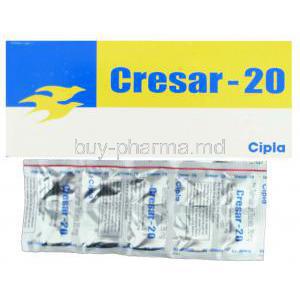Amlodipine
Uses
Amlodipine is used in the treatment of hypertension (high blood pressure), Amlodipine can help lower blood pressure in patients suffering from hypertension.
How it Works
Amlodipine is also known as calcium channel blockers or calcium ion antagonists, Amlodipine works in the body by widening the blood vessels, mwhich makes it easier for the heart to pump blood around the body and help increase the supply of blood and oxygen to the heart. Amlodipine as Calcium channel blockers do not change the amount of calcium in your blood or bones. Amlodipine works by blocking the amount of calcium that goes into the 'smooth' muscle cells in the walls of the arteries and in the heart. Calcium is needed for muscles to contract, so reducing the amount of calcium causes the muscle cells to relax, allowing more smoother blood flow and directly treating hypertension
Common Side effects
Patients who take Amlodipine may suffer from such side effects;
Fatigue,
Sleepiness,
Flushing (sense of warmth in the face, ears, neck),
Headache,
Ankle swelling,
Nausea,
Dizziness,
Palpitations,
Edema,
Abdominal pain
Atenolol
Uses
Atenolol is used in the treatment of angina, arrhythmia, heart attack and increased blood pressure.
How it Works
Atenolol works by blocking tiny areas called the beta-adrenergic receptors, where messages sent by some nerves are received by the heart and blood vessels. Atenolol causes the heart beats more slowly and with less force. Thus leading to pressure of blood within your blood vessels to be reduced and it is easier for the heart to pump blood around the body.
Common Side effects
Patients who take Atenolol may suffer from such side effects;
Nausea,
Headache,
Fatigue,
Slow heart rate,
Breathlessness,
Diarrhoea,
Palpitations,
Abdominal pain,
Dizziness,
Constipation
Introduction
Norvasc is a calcium channel blocker drug. Its main function is to relax the vessel of the blood and facilitates improvement of blood flow. This is an anti hypertensive medication. Amlodipine is the generic name for this drug. It is manufactured by CIPLA and Shreya. Other brand name out in the market is Amloz AT.
Composition
The main component of Norvasc is amlodipine besylate. It is a crystalline powder that is white in color and has a molecular weight of 567.1. It is a water soluble molecule. It comes in the form of white tablet that is of 2.5 mg, 5mg, and 10 mg administered orally. The inactive components of this drug are dibasic, magnesium stearate, sodium starch glyconate, microcrystalline cellulose, and calcium phosphate anhydrous.
Use
Norvasc is use to treat hypertension. This medicine can be use solely or in combination with other drugs. Specifically it is use to treat coronary artery disease, angina both of chronic and variant type.
Dosage and administration
The recommended dosing for adult patient is 5 mg a day. Adjust the dosing at 7 days to 14 days interval. A much less dosage is recommended to patient with impaired liver function and elderly patient. Ideally these patients are given 2.5 mg of Norvasc. Children 6 years old to 17 years old are given a low dose of Norvasc ideally 2.5 mg once a day. The Norvasc tablet comes in 2.5 mg, 5 mg, and 10 mg strength. The 2.5 mg tablet is white in color, diamond in shape, and has the word NORVASC engraved into it. The Norvasc 5 mg tablet is white in color and octagon in shape, and has the word NORVASC engraved. The 10 mg tablet is white in color and round in shape.
Contraindication
The medicine is contraindicated to patient with hypersensitivity reaction to amlodipine and any of its components.
Important Precautions
Observe the patient with aortic stenosis for any signs of hypotension. Be cautious also in giving this drug to patient with liver dysfunction. Pregnant women are allowed to take this medicine only if it is of great benefit. It is safe to use by lactating mothers.
Side effects
Reported adverse effects of this medication are dizziness, headache, flush feeling, nausea with or without vomiting, fatigue, abdominal pain, drowsiness, somnolence, difficulty swallowing, muscle pain, joint pain, anorexia or loss of appetite, vertigo, drying of the mouth, excessive sweating, excessive thirst, diarrhea, and flatulence. However, call your doctor right away if you experience severity of side effects such as difficulty of breathing, epistaxis or nose bleeding, sexual dysfunction, double vision, severe allergic like reaction such as appearance of rash that is very itchy and painful in nature, chest tightness, and inflammation of the eyes, tongue, and other facial structures.
Storage
Keep Norvasc in its original container. Store the container in a room temperature ideally 15 degree Celsius to 30 degree Celsius or 59 degree Fahrenheit to 86 degree Fahrenheit. Keep the container away from direct sunlight, moist, or humid environment. Do not store the drug in the bathroom. Discard medicine immediately once it reaches maximum shelf life.















